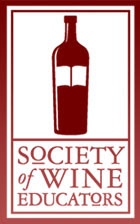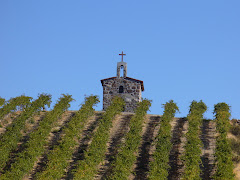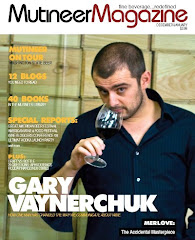
Continuing from yesterday, we are back with more Italian primer – this time taking a brisk walk through the Italian wine landscape, starting at the top of the boot, with the tiny region of the Valle d’Aosta.
Valle d’Aosta is the smallest of the Italian wine regions, bordering Switzerland to the north, France to the west, and Piedmont to the south and east. An ancient growing region, grapes have been cultivated since the Roman days, with around 22 varieties authorized for growing, including Picotener (the local name for Nebbiolo), Neyret, Vien de Nus, Fumin, Mayolet, Prie Route, Petit Rouge, Pinot Nero (Pinot Noir), Gamay, Dolcetto and Syrah for the reds, and Moscato Bianco (also called Moscat de Chambave), Pinot Grigio (also known as Malvoisie), Blanc de Morgex, Prie Blanc, Muller-Thurgau, Chardonnay and Petit Arvine. There are no DOCG wines from this area.
Piedmont means “at the foot of the mountains.” This region is by far one of the most recognized regions in Italy. It is the second largest region and has the most DOC wines (over 40) and DOCG wines (7). Most of the production of wine originates in the heart of Piedmont, the Po River Valley. Here you will find Barolo, Barbaresco, Gattinara and Moscato d’Asti. The first three I mentioned are all made with the Nebbiolo grape, and the last mentioned is from the ancient Muscat grape. Dolcetto and Barbera are also widely planted red varieties, as well as Freisa, Grignolino and Brachetto. The most popular white grape is the Cortese, used for the DOCG wine, Gavi. Arneis (nicknamed the “white Barolo”) and Erbaluce di Caluso are also grown. Another important wine product produced here is Vermouth, made with at least 70% wine, and fortified and flavored with various roots, spices, herbs and wood – this is what is known as an “Aromatic” wine.
Lombardy sits in the semi-circle created by the Alps that enclose Italy to the north. The mountainous north and the flat Po River Valley in the south define the topography of the growing regions, which are divided into three: the Valtellina in the North, the Oltrepo Pavese in the southwest, and the Franciacorta in the east. Nebbiolo, known locally as Chiavennasca, is the primary red grape grown in the Valtellina. The Oltrepo Pavese is known primarily for Pinot Nero. And the greatest sparkling wines from Italy come from the Franciacorta, and is derived from Chardonnay, Pinot Bianco and/or Pinot Nero.
The Trentino-Alto Adige is the northernmost wine region in Italy, bordering Austria and Switerland. It is divided into two parts, the Trentino and the Alto Adige. Vineyards are planted on terraces or light well-drained alluvial soils and clay. Alto Adige is known for Pinot Grigio, Chardonnay, Pinot Bianco, Sauvignon Blanc, and the red grape Teroldego. Trentino boasts primarily whites as well, with Sauvignon Blanc, Moscato Giallo, Muller-Thurgau, Pinot Bianco, Pinot Grigio, Riesling Italica, Riesling Renano, Sylvaner Verde, Chardonnay, Traminer and Veltner, with red grapes such as Cabernet Franc, Cabernet Sauvignon, Lagrein, Malvasia Nero, Merlot, Pinot Nero, Schiava Gentile, Lambrusco, Marzemino and Teroldego. Friuli-Venezia Giulia borders the Veneto to the west, Slovenia to the east and Austria to the north. This region has been relatively anonymous until the 1960s, when modern winemaking techniques were introduced, despite there being a large volume of wine produced in the area. There is 1 DOCG (Ramandolo) and 9 DOC wines in this area, with primarily grape varieties such as Cabernet Sauvignon, Pinot Nero, Chardonnay, Riesling and Sauvignon Blanc being cultivated. Local varieties such as Refosco, Verduzzo, Tocai and Picolit are also cultivated, and making a resurgence.
Veneto is located in NE Italy, along the Alps to the Adriatic Sea, bordering Austria and the Trentino-Alto Adige. Veneto is the third largest wine producing region (behind Apulia and Sicily). The most cultivated grape varieties in this area include white grapes Garganega, Prosecco, Tocai, Verduzzo, Trebbiano di Soave, Pinot Grigio, Chardonnay and Pinot Bianco, and reds like Corvina, Rondinella, Molinara, Raboso, Negrara, Merlot, Pinot Nero and Cabernet Sauvignon. The most significant wines are the 3 DOCG wines (Recioto di Soave, Soave Superiore and Bardolino Superiore) and the 22 DOC wines (including Amarone, Valpolicella, Bardolino, Soave, Lugana, and Prosecco di Conegliano). Ripasso is a traditional technique that introduces a secondary fermentation to Valpolicella on Amarone lees, usually drying out the grapes and pouring the Valpolicella juice over the top.
Liguria is often called the Italian Riviera, found just beneath Piedmont along the Mediterranean coast. Many grapes are grown here, including Ciliegiolo, Dolcetto, Barbera, Sangiovese, Canaiolo, Merlot, Cabernet Franc, Rossese, and Alicante, along with white grapes Albarolo, Bianchetta, Bosco, Pigato, Vermentino, Moscato Bianco, Albana, Greco Malvasia and Trebbiano. There are 6 DOC wines, yet no DOCG. Emilia-Romagna borders the Adriatic Sea to the east, the Tuscan Apennines to the South, the Ligurian Apennines to the west and the Po River to the north. It is one of the largest wine producing areas and is divided into the western Emilia and the eastern Romagna, with the city of Bologna right in the middle. The first white DOCG – Albana di Romagna – is found here, made from the Albana grape. Also grown here are Pagadebit (known in Apulia as Bombino Bianco), Sangiovese and Cagnina (related to the Refosco grape of Friuli).
Tuscany is the most prestigious and recognizable region in Italy, with the region serving as the epicenter for a great many changes in Italian wine law, including the inclusion of non-traditional grapes such as Merlot, Cabernet Sauvignon, Syrah and Chardonnay in blends traditionally thought of as native Italian grapes only. The primary grape variety is the Sangiovese, with its clones comprising the most noteworthy wines of the region – Brunello di Montalcino (the Brunello clone), Vino Nobile di Montepulciano (Prugnolo), and clonal types in Morellino di Scansano, Carmignano, Chianti and Chianti Classico. There are at least 650 different clones of Sangiovese in Montalcino alone, and these same grapes planted in Chianti produce completely different wines. Some other varietals cultivated in Tuscany are Canaiolo, Cabernet Sauvignon, Cabernet Franc, Syrah, Merlot, Vernaccia, Mammolo, Malvasia Bianca, Trebbiano, Pulcinculo (Grechetto Bianco), Vernaccia, and Malvasia del Chianti.
Marches resides along the Adriatic coast, and is one-third covered with rolling hills, with the rest being covered by mountains. There are 12 DOC wines here and 1 DOCG. The primary grapes are Montepulciano (this grape should not be confused with the Vino Nobile di Montepulciano of Tuscany, which is made from the Sangiovese clone of Prugnolo), Verdicchio, Sangiovese, Vernaccia, Pinot Bianco, Ciliegiolo and Trebbiano. Umbria is the only region which is completely landlocked. It is home to the DOC wine Orvieto, made from Trebbiano and Malvasia, and two DOCG wines – the Sagrantino di Montefalco, made primarily from the indigenous Sagrantino grape, and Torigano Rosso Riserva, a blend of Sangiovese and Canaiolo Nero primarily. Latium is a very historic region, residing around the capital of Rome. The most renowned wines of this area are Frascati, and Est! Est! Est!, both white wines made from Trebbiano and Malvasia, as well as reds made of Montepulciano.
Abruzzo has undergone a wine revival of sorts, elevating it to the sixth largest wine producing region in Italy despite it specializing in just two DOC wines – white Montepulciano d’Abruzzo (made from Trebbiano) and the red, made from Montepulciano. Grape varieties planted recently included Pinot Bianco, Pinot Grigio, Riesling Italica, Riesling Renano, Sylvaner Verde, Traminer Aromatico, Tocai, Vetliner, Pinot Nero, Merlot, Dolcetto and Malbec. Molise is small by even Italian standards, and borders Abruzzo to the north, Latium and Campania to the west,
Apulia to the south and the Adriatic to the east. Only two DOCs come from this region, Biferno and Pentro di Isernia, both producing red, white and rose wines.
Apulia is reputed to have produced wine since 2000 B.C. It is one of Italy’s largest wine producing regions and is undergoing a winemaking revival of its own. Over 80% of the wines from Apulia (also called Puglia) are red, including the Primitivo, Negroamaro, Uva di Troia, Bombino Nero, Sangiovese, barbera, Aleatico and Malvasia Nero grapes. White grapes include Verdeca, Bianco d’Alessano, Bombino Bianco, Malvasia Bianco and Trebbiano. The major DOC wines are Salice Salentino, Castel del Monte, Copertino, and Primitivo di Manduria.
Campania boasts the historic cities of Naples, Avellino and Salerno, as well as the ruins of Pompeii and Herculaneum, and of course Mount Vesuvius. The rich and fertile volcanic soil makes this warm-weather macroclimate ideal for grape growing. The principal grapes found here are Aglianico, Aleatico, Barbera, Piedirosso and Sciascinoso for the reds, and Biancolella, Coda di Volpe, Falanghina, Fiano, Greco, Malvasia, Verdeca, and Trebbiano for the whites. Taurasi DOCG is the most famous of the reds, and is often referred to as the “Barolo of the South.”
Basilicata is one of Italy’s most mountainous wine regions, and is formed by the southern extension of the Apennines. The only DOC is the Aglianico del Vulture, made from Aglianico grapes grown on the slopes of Monte Vulture, an ancient volcano. Other grapes grown in Basilicata are Sangiovese, Uva di Troia, Montepulciano, Barbera, Malvasia Bianco, Moscato, Fiano, Santa Sofia and Bombino Bianco.
Calabria is almost entirely mountainous or hilly, with the mesoclimates within the region varied from subzone to subzone. There are 8 DOC wines, mostly producing red or rose wines. Some of the grapes produced here are Gaglioppo, Greco Nero, Nerello Cappuccio, Nerello Mascalese, Guarnaccia, Greco Bianco and Moscato. The most noted DOC wine, Ciro, comes from the Gaglioppo grape, and has been produced there for several thousand years.
The island of Sicily lies to the southeast of Calabria, and is one of Italy’s largest wine producing regions. The DOCs include the Cerasuolo di Vittoria, Enta, Malvasia delle Lipari and Moscato di Pantelleria, as well as Marsala, a fortified wine that resembles a Port, and is done both sweet and dry. Grapes include Nero d’Avola, Nerello Mascalese, Cataratto Bianco, Verdello, Inzolia, as well as Chardonnay, Merlot, Syrah and Cabernet Sauvignon. The island of Sardinia is home to 18 DOC wines and 1 DOCG, the Vermentino di Gallura. Other grapes such as Cannonau (Grenache), Monica, Carignan, Vernaccia, Vermentino, Moscato, Nuragus and Malvasia are grown here. Viticulture was believed to have been introduced either by the Spaniards in the 14th Century, or perhaps much earlier, by the Phoenicians sailing from Lebanon 5000 years ago.
From this extremely brief overview, you can suddenly understand that there is a heckuva lot more going on in Italy than just Chianti and Pinot Grigio. Much more than this small “primer” (information derived from the Society of Wine Educators Study Guide) can provide. For more about Italian wine, visit
Italian Made or our good friends at the Italian wine blogs
Montalcino Report,
On The Wine Trail in Italy and
Mondosapore.
In the next few days, I’ll have some reviews up for some of the latest new Italian wines we have in our stores, and hopefully, I can get some of you as jazzed about Italian wines as I am.
 After a long hiatus, our stores have finally welcomed back to our shelves the amazing Italian wines of Leonardo Locascio and Winebow, and most importantly, one of my all-time favorite values from Italy, the Allegrini Palazzo della Torre 2006. From the Veneto region of Italy, this something of a "Super-Venetian" red is a blend of Corvina Veronese, Rondinella and Sangiovese, which makes it an amped-up Valpolicella blend, more-or-less.
After a long hiatus, our stores have finally welcomed back to our shelves the amazing Italian wines of Leonardo Locascio and Winebow, and most importantly, one of my all-time favorite values from Italy, the Allegrini Palazzo della Torre 2006. From the Veneto region of Italy, this something of a "Super-Venetian" red is a blend of Corvina Veronese, Rondinella and Sangiovese, which makes it an amped-up Valpolicella blend, more-or-less.














 Tuesday (October 6) was somewhat muted chance to be more sightseer than frantic participant in the Road Trip. A 7 a.m. wake up call found us taking in a slower-paced breakfast before climbing aboard “Truckin’” for our vineyard exercise, today being held at Goose Ridge.
Tuesday (October 6) was somewhat muted chance to be more sightseer than frantic participant in the Road Trip. A 7 a.m. wake up call found us taking in a slower-paced breakfast before climbing aboard “Truckin’” for our vineyard exercise, today being held at Goose Ridge.








.jpg)















